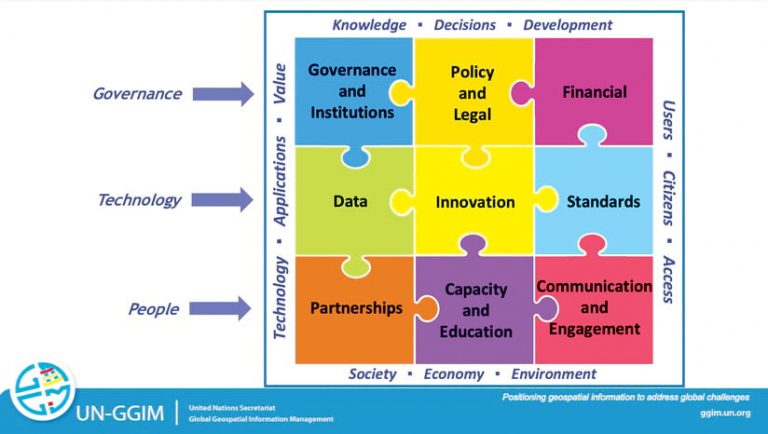Maps need data. Cartography is—and has been—at the forefront of the development of geospatial data, GIS, GIScience, geospatial standards, visualization, generalization, and related topics.
Digitized paper maps transformed map data and map design into new types of databases. The 1980s and 1990s were innovative periods in which point, line, and area symbols, augmented with names and colors, were transformed to digital data, sparking a technological and data revolution. Governments, academia, and the private sector pursued different database constructs, which culminated in two common approaches that differed significantly.
The first focused on automating the mapping process so maps could be produced and printed with computer assistance. Emphasis on manual techniques was reduced to save time and materials (and presumably cost, which largely wasn’t realized). New technologies were applied to this digital data repository that stored map content and design in ways that replicated maps as if they were produced via traditional processes. In fact, that was the goal: to make a machine copy of cartographers’ skilled artwork. Today, the limitations of this approach are clearly understandable, but at the time, the excitement—coupled with the unknown potential of computers—led to different ideas for modernizing the mapping process.
The second database “design” was structured to accommodate each geographic feature rather than the cartographic representation of the geography. In this way, digital data reflecting geographic objects in the form of features—such as a class of road, a type of boundary, or the relationship between the position of one geographic feature to another—was encoded. Relationships among geographic phenomena in a database were made possible with the development of topology (which, in cartography, can be traced back to James Corbett’s book Topological Principles in Cartography). Digitizing and encoding geography required thoughtful database designs and lots of hard work (which is one reason why automating mapping was rarely cost-effective, particularly in initial efforts). The benefits of giving a geographic structure to the data lay in the many applications and uses of the information that extended well beyond the creation of the specific content and design of a topographic map.
The biggest challenge in the early days of GIS was a lack of digital geographic data. In much of the developing world, this is still the case.
Initially, data was encoded locally for a specific project. National efforts to create and manage what today is called geospatial data began in the 1980s and continue today. As a way to organize, standardize, and manage a national resource of digital geospatial information, the concept of the National Spatial Data Infrastructure (NSDI) was introduced in the early 1990s. The NSDI concept helped assign the responsibilities of creating and maintaining geospatial data within a country. One objective was to reduce different organizations’ duplicative efforts. For some countries, and for a period of time, endeavors to create and maintain an NSDI were a sufficient approach.
Developing countries are often at a disadvantage if they do not have an NSDI. The lack of digital geospatial information precludes some countries from using available technical capabilities, and outdated maps or the absence of a national mapping effort add to the challenges that these nations face. This has made it difficult for some countries to attain an NSDI. Advances in technology—such as satellite imagery and software that extracts and encodes some of that data—make it possible for developing countries to leapfrog prior efforts to acquire, store, and use geospatial information. However, other geospatial data does require more effort, expertise, and expense to obtain, transform, and use.
For those who work to collect, manage, and disseminate geospatial information, it is no longer sufficient to continue using past approaches associated only with an NSDI. The question today is, What is needed to establish and maintain a geospatial capability? Furthermore, what is needed to answer basic questions related to economic, social, and environmental interests and challenges that are influenced by location information? And how can geospatial information support national priorities and circumstances while securing a safe and beneficial data ecosystem for that country’s population?
The United Nations’ (UN) response to these questions is the Integrated Geospatial Information Framework (IGIF). The IGIF addresses why geospatial information is important for all countries and needs to be strengthened from within. It describes, via nine strategic pathways, what is needed to build and maintain the capabilities required to manage and offer geospatial information to users.

In countries that have an NSDI, the IGIF builds on those efforts, and for countries that don’t, the IGIF is a good starting point since it supports responses to important interests and challenges that every jurisdiction faces. As the graphic of the concept shows, each section of the IGIF is integrated, like a puzzle. On the website, the UN Statistics Division outlines how to implement geospatial information frameworks and, in the Solving the Puzzle section, introduces individual country-level action plans designed to help nations build and maintain their own IGIFs.
Today, geospatial information is so prevalent—even if we’re not aware of its presence and all it has to offer. For example, while many people may take for granted the GPS on their smartphones, this technology provides data-rich opportunities. Just by knowing a user’s geographic coordinates and where he or she wants to go, different apps in that smartphone can give the person the best route for getting there.
Use of technologies ranging from cell phones to credit cards increases the volume and types of data that are available. And each data element is likely to be geospatially referenced, meaning it has location. While traditionally this data may not be thought of as geospatial, the value of integrating it with fundamental geospatial data themes—such as addresses, elevation and depth, orthoimagery, and population distributions—is groundbreaking. It offers so many new opportunities to see the world and our lives in different ways.
Statistics that are linked to a geographic location are a prime example of geospatially referenced data. For instance, the population of a town is a statistic that applies to the entire area included within that town’s geographic boundary. Similarly, the number of people employed within a specific industry type for a given metropolitan area can be mapped to show comparisons with other metropolitan areas.
From the perspective of responding to the coronavirus disease 2019 (COVID-19) pandemic, geospatially referenced statistics aid in making sound decisions about the virus’s prevalence, trends regarding the spread and control of outbreaks, the locations of population groups most susceptible to contracting it, the rate of testing by neighborhood, and eventual inoculation at the individual level.
To map all this, decision-makers need accurate and up-to-date data so they can plan and take necessary actions. Currently, much of this data is not available at the appropriate geographic level to make the best decisions. The need for this type of geospatial and statistical data will only continue to grow—not only in response to COVID-19 but also for future pandemics that will likely challenge our communities.
The IGIF provides nations with a comprehensive approach to answering critical questions. Most often, maps are used as tools to visualize current situations and project future impacts. The topics are limitless. Whether it is arresting the spread of a deadly virus or mapping a community’s economic opportunities, the existence of an Integrated Geospatial Information Framework makes it possible for everyone to contribute to the process, propose and act on solutions, and enjoy the benefits of the outcomes.


